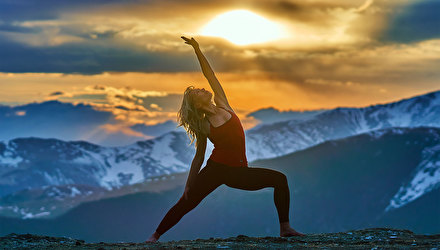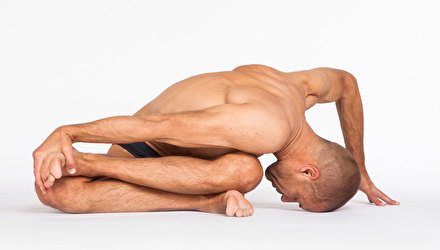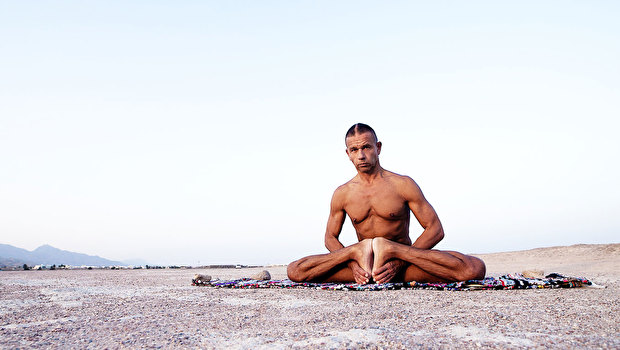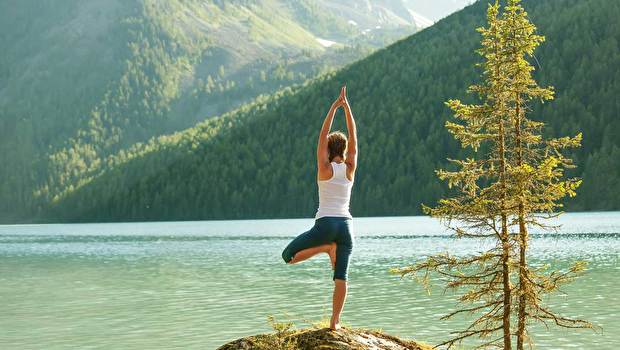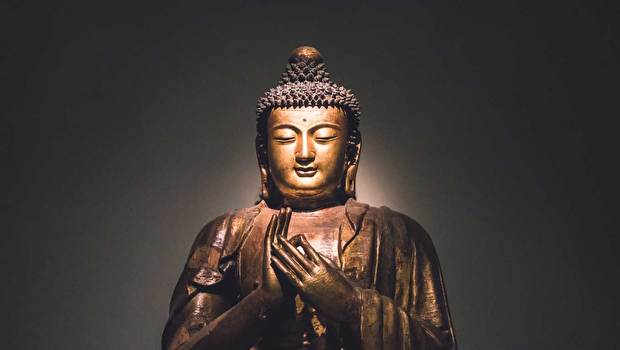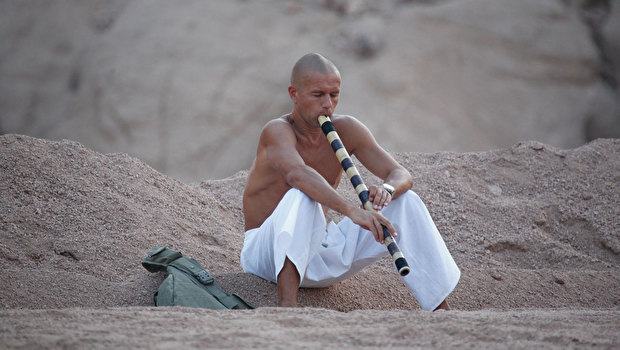In the arsenal of yoga gymnastics, there are two main inverted poses based on the back of the head, shoulder joints and shoulder blades - the plow pose - halasana and the stand on the shoulder blades - sarvangasana. Each of them can be performed in various variations - from very simple to very intricate. In terms of their energy-informational potential, both exercises are among the most effective.
As a structural-geometric practice, halasana activates the entire "chakra line", "fills" and "stabilizes" the main center of "life force" in the abdomen. Thanks to this, halasana can be used as an effective therapeutic exercise for a variety of functional pathologies. The radical psychedelic effect that is achieved through the practice of halasana is due to its balancing effect on the endocrine and central nervous systems and, as a result, additional mild physiological activation and balancing of organic structures responsible for the implementation of chakra functions (functions of systemic control of energy-information metabolism).
In sarvangasana, the main focus of action shifts towards the activation and balanced functional stimulation of the three upper centers of the chakra chain - vishuddha, ajna- and sahasrara-chakras - the control centers of the mental body, the body of the soul and the body of the Spirit, respectively. This is due to the inverted position of the body relative to the gravitational field of the Earth, which leads to a redistribution of the pressure gradient of physiological fluids. In addition, the mutual position of the neck and head is of great importance, due to which some additional specific pressure accents arise in the system of circulation of physiological fluids. This results in an even more pronounced balancing effect of the asana on the endocrine and central nervous systems than even in halasana. At the same time, due to a reduction in the area of support and a significantly higher concentration of weight force than in halasana, sarvangasana can have an adverse effect in more cases than halasana.
In any case, before practicing halasana and sarvangasana, even in the simplest versions, it is necessary to find out if there are any contraindications.
The simplest version of halasana is called "viparita-dhanura-asana", which is translated from Sanskrit as "reverse arc pose" or "reversed bow pose". In it, the feet are tightly fixed with hands. The procedure for entering the fixation phase of viparita-dhanura-asana is as follows.
The exercise is performed as follows:
- Lie on your back.
- Stretch straight arms behind your head.
- Slightly bend your legs and press the buttocks to the floor.
- Without lifting your lower back from the floor, straighten your legs above the floor. If the lower back comes off the floor, you need to straighten your legs higher from the floor. If you can’t straighten your legs at all without lifting your lower back off the floor, raise your bent legs.
- We throw our legs behind our heads and grab our socks with our hands.
- In no case do we help ourselves with our hands, starting from the floor behind the back. All movements - only with the help of the muscles of the body. The hands are behind the head. If you use your hands to push off the floor behind your back, as is often done when halasana is not performed correctly, the cervical spine may suffer and the atlas may shift. And this, over time, can result in cerebrovascular accidents and very serious systemic disorders.
- We straighten our legs as far as possible, and with our legs we stretch our arms as far as possible behind the head. At the same time, the surface of the back is evenly “opened”. We try to pull the stomach to the forehead as close as possible, turning the pelvis “on itself” and stretching the lower back. We make sure that there is no displacement of the stretch in the neck area. Shoulder joints, occiput and shoulder blades are firmly pressed to the floor.
- We fix the asana for a given number of breath cycles.
- Let go of your legs and slowly lower your lower back to the floor. Without lifting the lower back from the floor, we put our feet on the floor. Ideally, the legs come down in a straightened state, but if the lower back begins to come off the floor, forming a deflection, the legs should immediately be bent and placed on the floor. Lowering straight legs in lumbar arch leads to inadequate compression in the lumbar spine.

After the viparita-dhanura-asana has been worked out, you can move on to a more complex modification - the actual halasana. In this pose, the legs are extended further behind the head and away from the arms, and the hands are connected. If the hands are not closed in this position, energy can be dissipated from the fingers and the “energy-informational density” can be lost. We make sure that the stretching of the neck does not prevail over the study of the full surface of the back. We move slowly and very smoothly. We try to pull the stomach to the forehead as close as possible, turning the pelvis “on itself” and stretching the lower back. We make sure that there is no displacement of the stretch in the neck area. Shoulder joints, occiput and shoulder blades are firmly pressed to the floor. We do not allow the separation of the shoulder blades from the ground. If this condition is not met, the neck in an overstretched state “hangs” without a stabilizing support between the back of the head and the thoracic spine. This leads to displacement of the atlas and gradually results in cerebrovascular accidents with all the ensuing consequences.
In order to get into sarvangasana, you just need to raise your legs and arms, stretch your whole body vertically and relax. Body weight - on the shoulder joints, shoulder blades and the back of the head. Asana does not have to be perfect. In any case, both halasana and, moreover, sarvangasana, have the magical effect of viparita-karani-mudra (inverted position).
Nobody is in a hurry. It is better to master an asana for a long time and gradually than to quickly wring your neck, trying to perform it in the ideal version “immediately and right now” ...
ATTENTION!
Neither in halasana nor in sarvangasana do we ever prop our backs with our hands. Neither in the phase of entering the asana, nor in the phase of fixing the asana, nor in the phase of exiting the asana. This generally accepted common practice is a gross mistake. In this case, neck injuries and displacement of the atlas are very likely - due to overstretching of the cervical spine as a result of "non-fixed suspension" of the entire upper back between the back of the head and elbows. Supporting the back with the hands in halasana and sarvangasana is a tribute to unhealthy “gymnastics” to the detriment of the asana’s proper performance as a psychophysiological harmonizer and developing “energy-informational action” on the path of evolution of personal awareness.
After the basic forms of halasana and sarvangasana have been brought to perfection, you can move on to mastering the complicated forms. Of these, halasana with a lotus, halasana with a lotus and twisting, and sarvangasana with a horizontal lotus are the most effective.
Sarvangasana with a horizontal lotus generally belongs to the group of the most powerful variations of viparita-karani-mudra. In contrast, sarvangasana with a vertical lotus acts much weaker than ordinary sarvangasana.
Halasana with a lotus pressed to the front surface of the torso, as an energy-information action, is much more effective than halasana with a lotus, in which the knees touch the floor behind the head, although the latter modification is much more difficult purely gymnastically.



